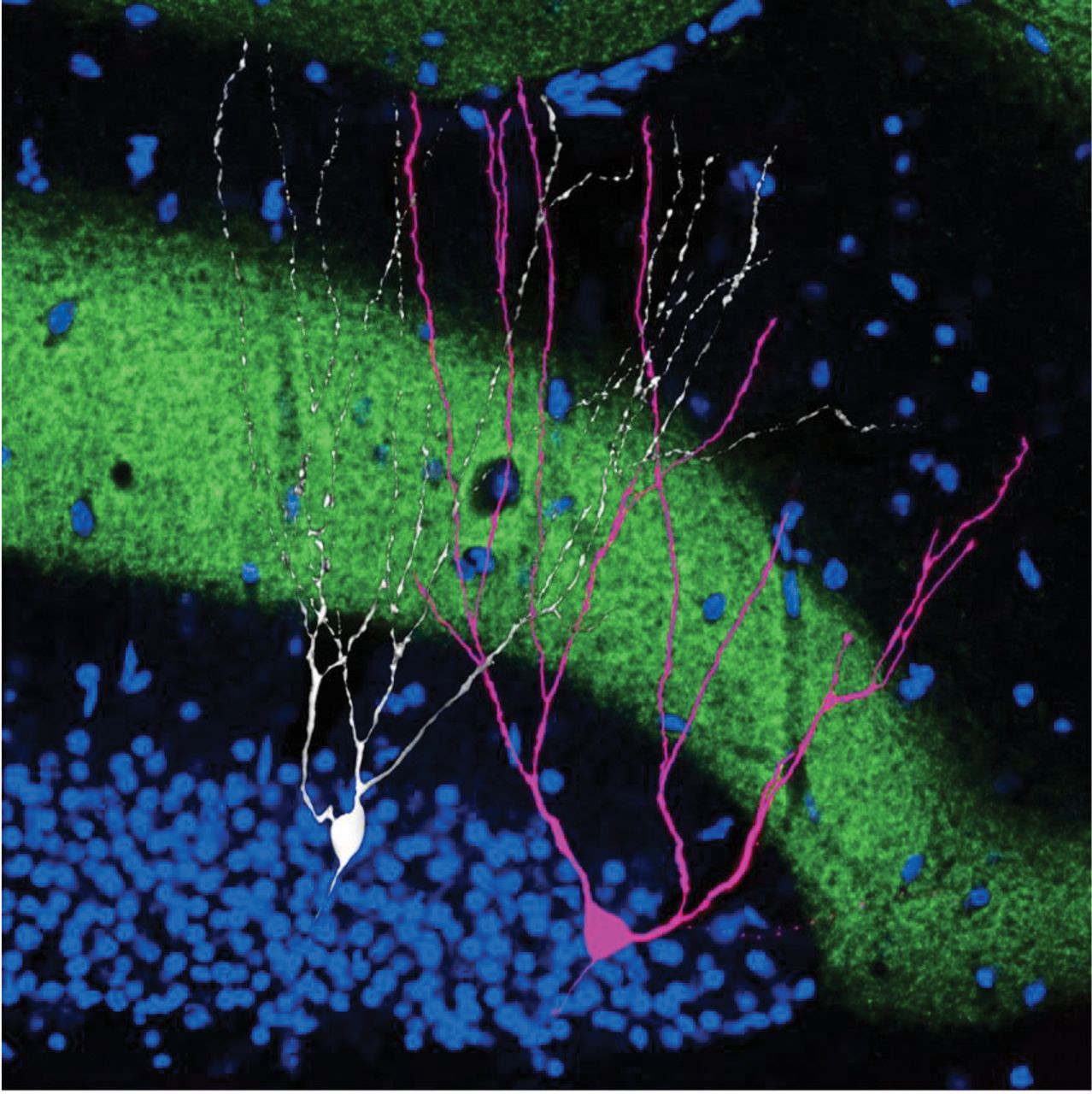Engram represents enduring offline physical and/or chemical changes that were elicited by learning and underlie the newly formed memory associations. More simply, it is a unit of cognitive information imprinted in a physical substance.
Engrams are fascinating, but our understanding is far from complete, and exact mechanisms of memory storage and retrieval are still debated. Two main competing theories on what the neurobiological substrate of memory is and where it resides in the brain are associative/connectionist theory (more widely accepted) and computational/representational theory (less widely accepted). Former posits that memory emerges at the circuit level, while the latter suggests that memory manifests at the level of intracellular molecular structures.
Closely related to engrams is ecphory, a process of memory retrieval that involves interaction between external sensory or internally generated cues and stored memory traces (engrams).
Paper “The neurobiological foundation of memory retrieval” by Frankland et al. (2019) gives a great overview of the state of knowledge on the mechanisms of memory retrieval (ecphory) at the level of neuronal ensembles.
Progress in understanding ecphory has been enabled by new technologies that allow engrams to be visualized and manipulated in rodents at the level of neuronal ensembles.
Research shows that there is an important conceptual distinction between availability versus accessibility of information in memory. That is, some forms of memory failure reflect a lack of availability of pertinent information (permanent loss), whereas other forms of memory failure reflect temporary problems in accessibility.
Memory retrieval can be manipulated in several ways:
- Ecphory (and memory expression) can be prevented by optogenetic inhibition of neuronal ensembles.
- Memory expression can be induced via direct photostimulation of the engram, even without the natural retrieval cues.
- Engram can be created artificially via direct photostimulation of neuronal cells, and its memory expression can subsequently be induced by appropriate natural cues.
Engrams can exist in a:
- Dormant state where natural retrieval cues induce engram activation and successful retrieval.
- Silent state where only direct optogenetic engram activation induces successful retrieval.
- Unavailable state where all information has been lost, and the memory is inaccessible regardless of the nature of access attempts.
Research shows that silent state engrams can be transformed to dormant state engrams via direct photostimulation. Which raises the question if some memories are truly and entirely unavailable (lost), or there are cues that could recover them, but we are just not aware of those cues.
Engram is shaped by environmental features and internal cognitive states during encoding, and the principle of “encoding specificity” tells us that the greater the match between encoding and retrieval states the higher the probability of retrieval success.
The strength of memory expression is proportional to the rate of reactivation of neural ensembles active at encoding, regardless of whether that reactivation is induced by natural or artificial cues. On the other hand, memory expression induced by artificial reactivation of engrams is typically weaker than that induced by natural cues.
Hippocampus plays a pivotal role both in the formation of memory and its recovery. Evidence shows that at retrieval, the hippocampus reinstates patterns of activity in the cortex that were present at encoding. Silencing relevant hippocampal cells during memory retrieval impairs memory expression and reduces reactivation of relevant cortical neuronal ensembles. Conversely, stimulating relevant hippocampal cells reinstates patterns of cortical activity present at encoding.
There are 4 aspects of equivalency between naturally and artificially induces memories:
- Both can serve as a conditioned stimulus for new learning.
- They extinguish, i.e. repeated context exposure in the absence of unconditional stimulus leads to reduced conditioned responding.
- Naturally and artificially retrieved memories reconsolidate, i.e. retrieval destabilizes engrams, leading to the requirement for protein synthesis for their subsequent restabilization.
- Both are subject to interference, i.e. recovery can be compromised if similar events are encountered either before or following the event in question.
Although our understanding of ecphory is getting better, broadly speaking there is a lack of knowledge as to how processes operating on engrams after their formation influence mechanisms of retrieval. Few of the more specific ones are:
- How does forgetting dynamic (preserving gist over detail) and resulting changes in engram organization affect the neural mechanisms of retrieval.
- What effect do interactions between engrams have on subsequent memory retrieval.
- How schemas (superordinate knowledge structures that reflect abstracted commonalities across multiple experiences) are organized at the level of neuronal ensembles.
